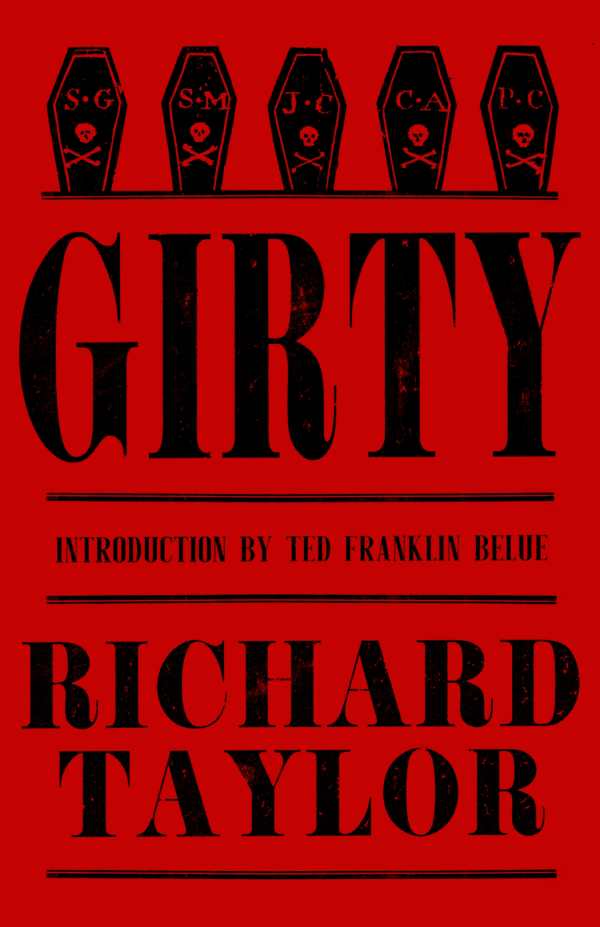Girty
Richard Taylor’s biographical novel Girty covers the terror and tragedy of the Indian Wars.
Simon Girty is legendary. Called “the first American frontier villain,” Girty, who was captured by Seneca Indians as a teenager, defected from the Revolutionary Army and was instrumental in the Indian resistance to the settlement of the Ohio River Valley and beyond. The novel approaches his history in a creative way, incorporating miscellany from diaries, letters, newspaper articles, and books to establish the details of his life. This research is blended with the imagined voice of Girty, shared in both prose and poetry.
Girty was illiterate; his personality and motives are obscured behind legends. Histories have portrayed Girty as both a “monster” and as a misunderstood freedom fighter. The novel avoids judgment but seeks understanding. It covers Girty’s participation in the Indian Wars and in “Indian justice.” A survivor’s description of the Shawanese torturing and burning Colonel William Crawford is a grisly example, though it is noted that this execution was in retaliation for a massacre led by Crawford’s troops. Meanwhile, the last Native American victory of the Revolutionary War, in which Girty played a key role, is ably described.
Girty’s interior monologues balance this portrayal. They include a view of the “free life” of Native Americans in contrast to the ideology of white settlers. Here, Girty experiences, in often stirring detail, the grazing lands, woodlands, and wildlife of the Ohio Valley region. His descriptions of a herd of stampeding buffalo is dramatic, and a bitter poem that bemoans the emerging Christian culture is read through his “turned Indian” eyes.
Richard Taylor’s creative, multidimensional biographical novel is appealing in its depictions of history, fed by its eyewitness observations.
Reviewed by
Joe Taylor
Disclosure: This article is not an endorsement, but a review. The publisher of this book provided free copies of the book to have their book reviewed by a professional reviewer. No fee was paid by the publisher for this review. Foreword Reviews only recommends books that we love. Foreword Magazine, Inc. is disclosing this in accordance with the Federal Trade Commission’s 16 CFR, Part 255.

